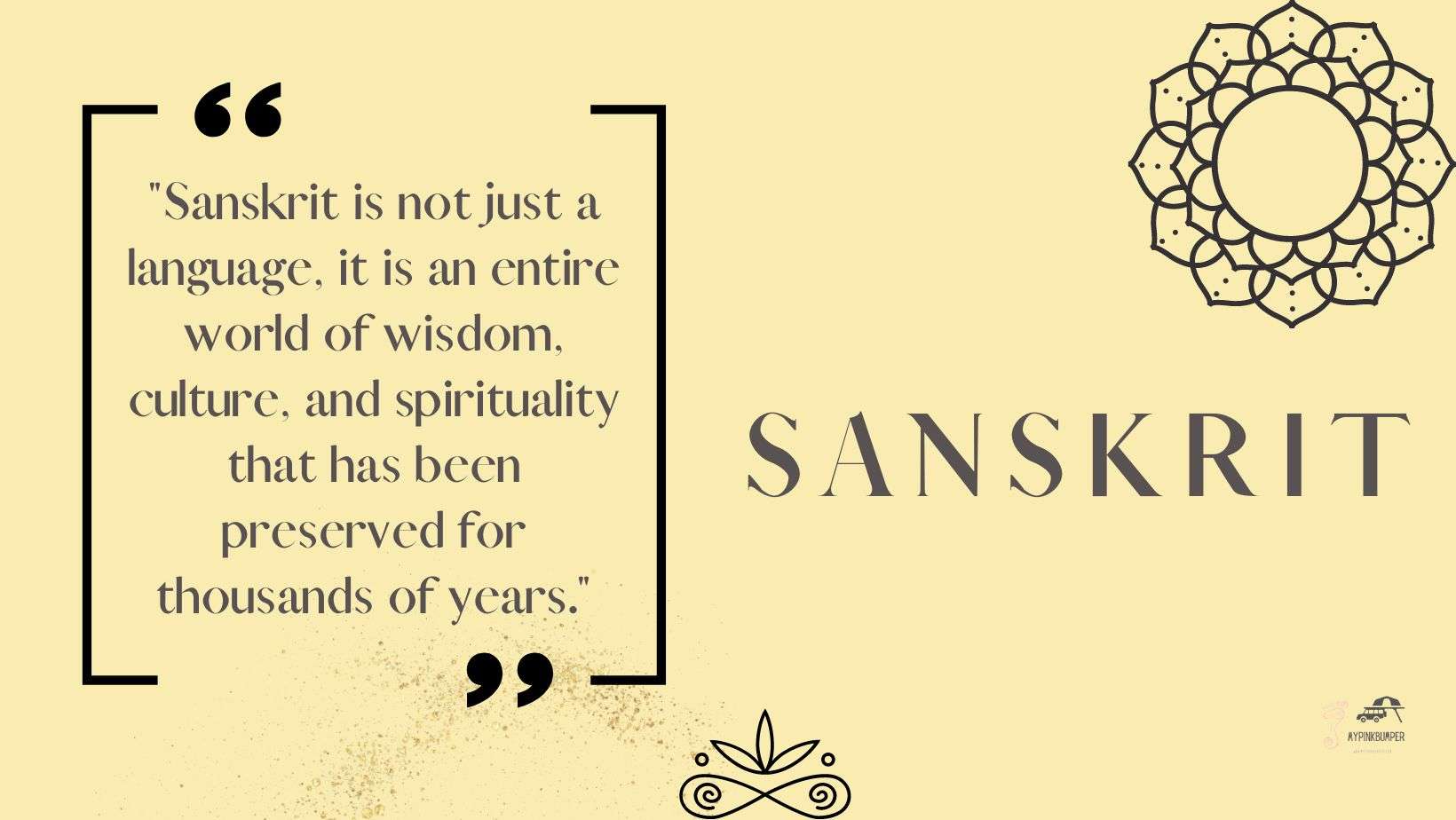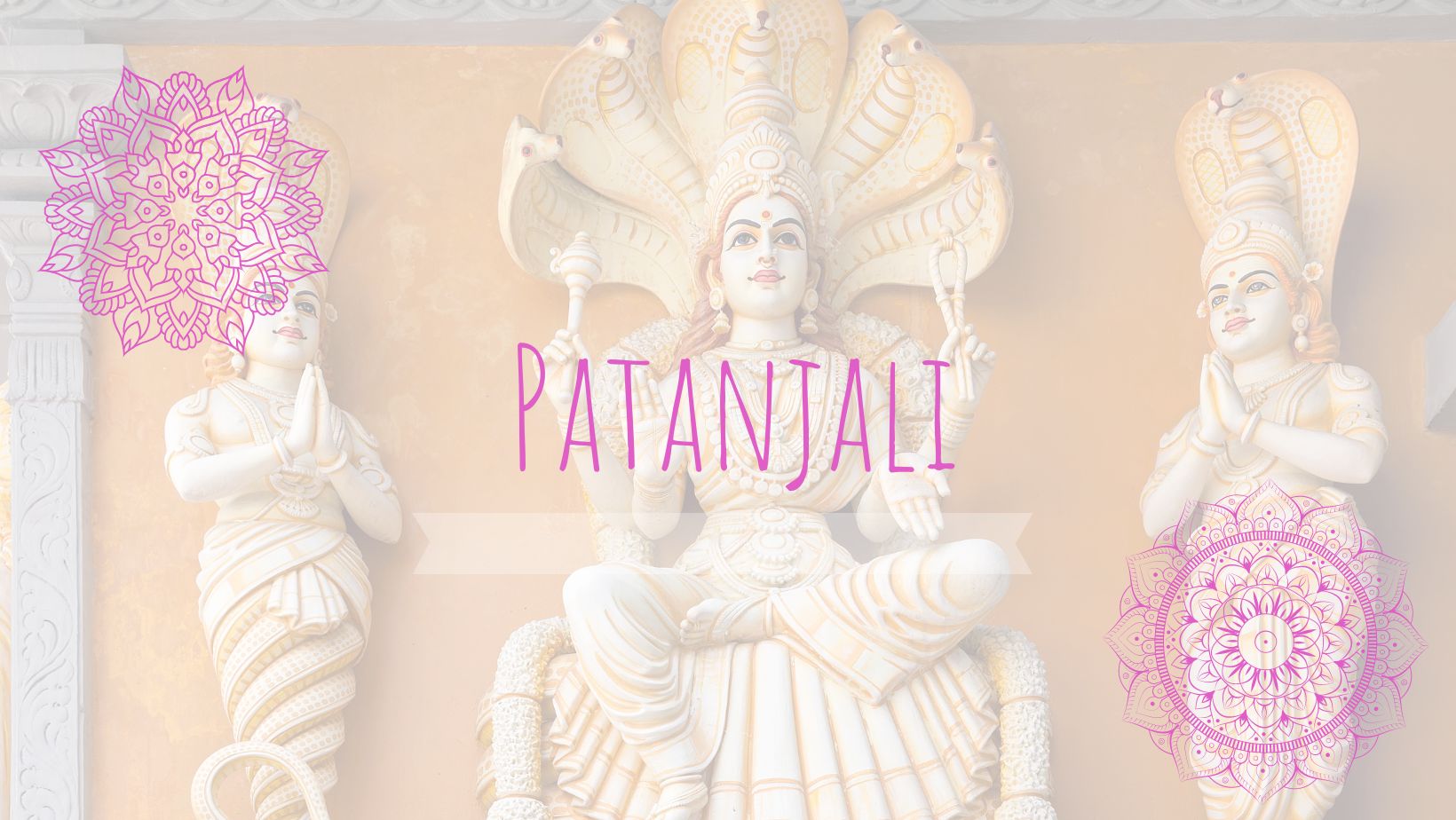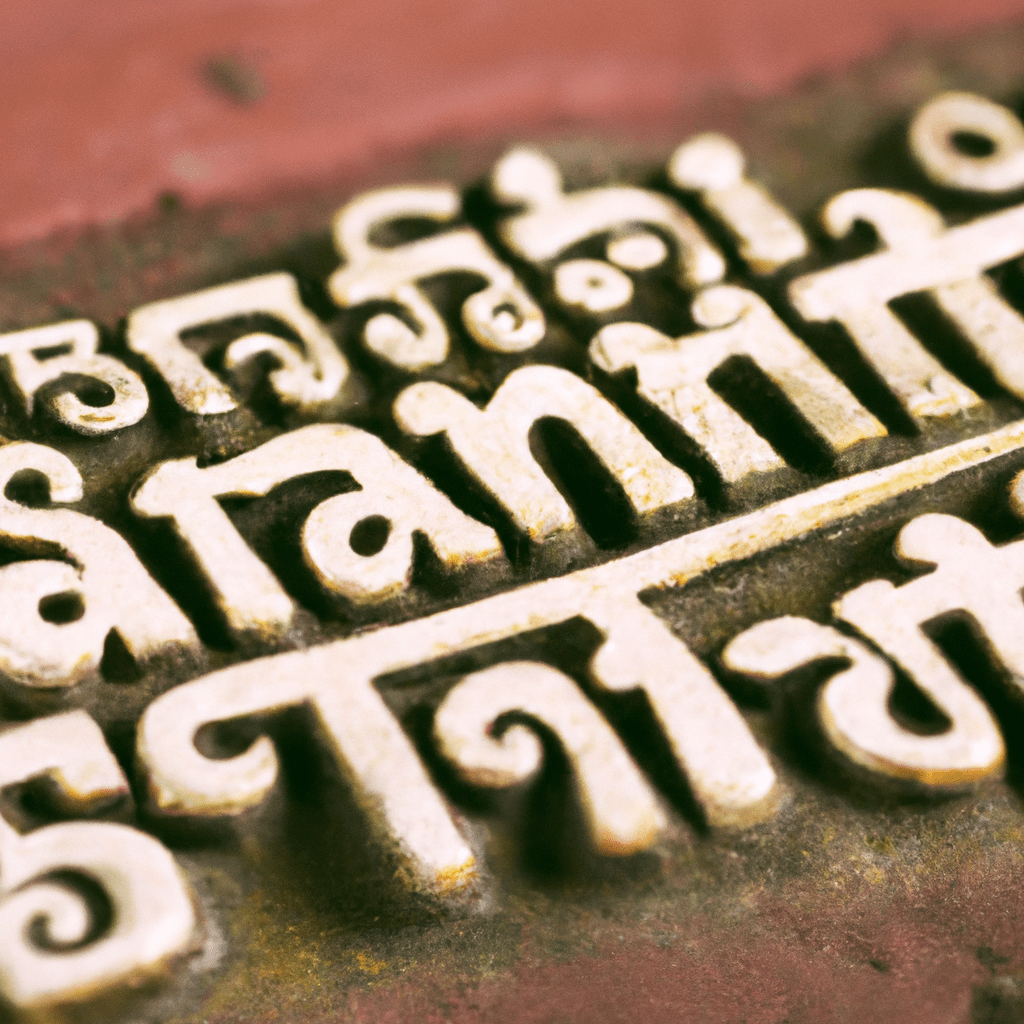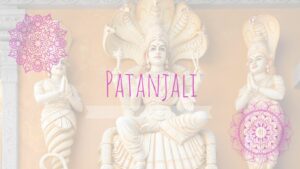
Sanskrit is an ancient language that originated in India around 1500 BCE. It is considered to be one of the oldest and most sophisticated languages in the world, and it has had a profound impact on the culture and spirituality of India, as well as on many other parts of the world.
Sanskrit is a highly structured language, with a complex grammar and a vast vocabulary of words and expressions. It has been used to write many of the most important texts in Indian philosophy, religion, and literature, including the Vedas, Upanishads, Bhagavad Gita, and Yoga Sutras.
“Sanskrit is not just a language, it is an entire world of wisdom, culture, and spirituality that has been preserved for thousands of years.”
Sanskrit is also the language of many mantras and hymns that are chanted during spiritual practices, such as yoga and meditation. The language is believed to have a unique vibrational quality that can affect the mind and body in positive ways, and its use in spiritual contexts is thought to have a powerful transformative effect on the practitioner.
Today, Sanskrit continues to be studied and used by scholars, spiritual practitioners, and enthusiasts around the world, and its rich legacy of literature and philosophy continues to inspire and inform people from all walks of life.
Learning to read Sanskrit
Learning to read Sanskrit can be a challenging but rewarding experience. Here are some steps to get started:
- Familiarize yourself with the Sanskrit alphabet: The Sanskrit alphabet has 49 letters and is different from the English alphabet. Start by learning the letters and their pronunciation.
- Learn basic grammar: Sanskrit has a complex grammar system, but it is essential to understand the basic grammar rules to read and write the language. Learning the rules of verb conjugation, noun declension, and sentence structure will be helpful.
- Practice reading simple texts: Once you have learned the alphabet and grammar rules, start practicing reading simple texts. Start with children’s books or basic texts with English translations.
- Listen to Sanskrit being spoken: Listening to Sanskrit being spoken by fluent speakers will help you understand pronunciation, intonation, and rhythm.
- Find a teacher or join a course: Joining a Sanskrit course or finding a tutor who can guide you through the learning process can be very beneficial. They can help you with pronunciation, grammar, and reading comprehension.
- Read and write regularly: Regular practice is essential to become proficient in reading Sanskrit. Practice reading texts and writing in Sanskrit regularly to improve your skills.
Remember, learning to read Sanskrit can be a lifelong process, so be patient and enjoy the journey.
Vedas
The Vedas are a collection of ancient texts that are considered the oldest and most sacred scriptures of Hinduism. They were composed in the ancient Indian language of Sanskrit and were passed down orally for generations before being written down. The Vedas consist of four main texts:
- Rigveda: The oldest and most important of the Vedas, containing hymns and mantras dedicated to various deities and cosmic powers.
- Yajurveda: A collection of rituals and prayers used during Vedic ceremonies and sacrifices.
- Samaveda: A collection of melodies and chants used during Vedic rituals.
- Atharvaveda: A collection of hymns and spells used for healing and protection.
The Vedas are considered to be the foundation of Hinduism and are believed to contain the wisdom and knowledge of the ancient Indian civilization. They cover a wide range of topics, including philosophy, spirituality, cosmology, science, and social customs. The Vedas are still studied and revered by millions of Hindus around the world, and their influence can be seen in many aspects of Indian culture and society.
Upanishads
The Upanishads are a collection of ancient Hindu philosophical texts that are considered to be the final part of the Vedas, the sacred scriptures of Hinduism. They were written in Sanskrit and composed between 800 BCE and 500 BCE, and they consist of over 200 texts.
The Upanishads explore the nature of reality, consciousness, the self, and the ultimate goal of human life. They emphasize the importance of knowledge, meditation, and self-realization in achieving spiritual liberation, or moksha. The Upanishads introduce concepts such as Brahman, the ultimate reality and source of all existence, and Atman, the individual soul that is identical to Brahman.
The Upanishads have had a profound influence on Hindu philosophy, as well as on Indian culture and spirituality. They have also inspired many thinkers and spiritual seekers throughout history, including Mahatma Gandhi, who called the Upanishads his “spiritual dictionary.” The Upanishads continue to be studied and revered by millions of Hindus around the world as a source of wisdom, insight, and spiritual guidance.
Bhagavad Gita
The Bhagavad Gita is a Hindu scripture that is part of the epic poem Mahabharata. It is one of the most important and widely-read texts of Hinduism, and is considered to be a spiritual and philosophical masterpiece. The Bhagavad Gita consists of 18 chapters, and is written in Sanskrit.
The Bhagavad Gita is a dialogue between the warrior Arjuna and his charioteer, Lord Krishna, who is considered to be an incarnation of the Hindu god Vishnu. The dialogue takes place on the battlefield of Kurukshetra, where Arjuna is about to engage in a war against his own relatives. Arjuna becomes overwhelmed with doubt and confusion, and Lord Krishna helps him understand the nature of reality, the self, and the ultimate goal of human life.
The Bhagavad Gita explores many important themes, such as karma, dharma, yoga, and devotion. It emphasizes the importance of selfless action, detachment from the fruits of one’s actions, and devotion to God as the means to achieve spiritual liberation. The Bhagavad Gita has had a profound influence on Hindu philosophy, as well as on Indian culture and spirituality. It is widely read and studied by millions of Hindus and non-Hindus around the world, and has been translated into many languages.
Yoga Sutras
The Yoga Sutras are a collection of ancient Hindu texts that are considered to be the foundational text of classical yoga philosophy. They were written by the Indian sage Patanjali in the second century BCE and consist of 196 aphorisms, or sutras, that outline the path of yoga.
The Yoga Sutras describe an eightfold path, known as Ashtanga Yoga, which consists of the following limbs:
- Yama: ethical guidelines for living in society
- Niyama: personal observances for individual growth
- Asana: physical postures for health and strength
- Pranayama: breathing exercises for mental and physical balance
- Pratyahara: withdrawal of the senses for concentration
- Dharana: concentration to focus the mind
- Dhyana: meditation to achieve a state of profound contemplation
- Samadhi: a state of ecstasy and liberation
The Yoga Sutras emphasize the importance of meditation, self-discipline, and detachment in achieving spiritual liberation, or samadhi. They also discuss the nature of the mind, the causes of suffering, and the methods for overcoming the obstacles to spiritual growth.
The Yoga Sutras have had a profound influence on the practice and philosophy of yoga, as well as on Indian culture and spirituality. They are widely studied and revered by yogis and spiritual seekers around the world as a source of guidance and inspiration.

“Of all the ancient languages, Sanskrit is the most perfectly structured, the most methodical, and the richest in vocabulary.” – Sir William Jones, British philologist and scholar of ancient India.
















